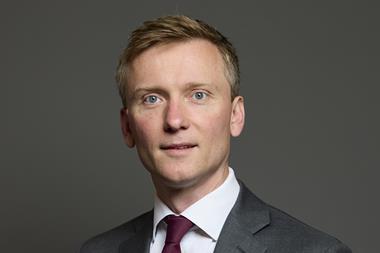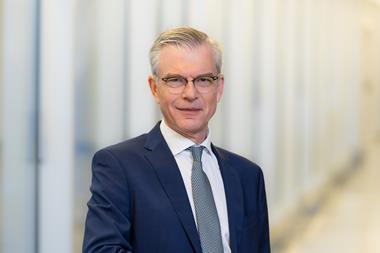Despite several attempts to reach a consensus, Czech politicians have failed to agree the shape of a reform to introduce a second pillar pension system. However, what was then Czechoslovakia made a promising start, reforming its pay-as-you-go state pension system within months of the fall of its communist regime and going on to allow the establishment of third pillar, voluntary individual supplementary pension funds. But the reform impetus ran out of steam there, despite a formalised process under which political parties proposed a second pillar architecture which ministry experts then costed.
As a result, while their politicians have squabbled, the Czechs have been overtaken by their neighbours in Hungary, Poland and in Slovakia, their former partners in Czechoslovakia. And with a general election last June intended to end a period of unstable government having resulted in deadlock and a failure to form a new government, changes are not expected soon.
But while elsewhere in the region third pillar pension funds, being voluntary, enjoy lighter regulation than mandatory second pillar funds, the funds function under regulatory restrictions which they say inhibit their asset management choices.
“A major limitation is that by law we have to provide clients with a positive return every year,” says Petr Benes, chairman and managing director of CSOB Pension Fund Stabilita, one of the third pillar operations. “This means that we have to be very cautious with our long-term investments and we have to be really conservative in our asset management. So more than 90% of our assets must somehow be linked to fixed income, bonds or term deposits or some capital guaranteed funds, and the scope for such assets as equities, foreign exchange or mutual funds linked to equity markets is very limited, up to 10% maximum.”
The result is low single-digit returns, says Daniel Drahotsky who heads the asset management section of the Capital Market Association (AKAT), a voluntary association of market players, including asset managers, brokers, leading banks and lawyers. “With the typical portfolio of a pension fund being approximately 10% in equity, you can imagine what the return can be if you have 80% in three-to-five-year duration fixed income portfolio in Czech koruny, then some T-bills. If they want to be more adventurous they increase the duration on the bond portfolio. Some asset managers are a bit more innovative. I work with Ceska Pojistovna, which has 5% in commodities and less than 4% in hedge funds and that is the most adventurous on the market.”
Drahotsky identifies other reasons why funds are managed so conservatively. “If the pension funds lose money the shareholder of the fund has two options, to decrease the value to the pension members or to offset the loss from its own resources,” he says.
“No fund has yet been in this situation but all pension fund owners are afraid of the possibility that they will have to subsidise a pension fund. In addition, pension fund members can switch funds at any time redeeming his or her assets from the fund within a one month period with almost no penalty, meaning theoretically that a fund could be emptied in one month.
“As a result, although the funds are not open-ended funds, they are run as if they were. Consequently, they invest in quite liquid instruments and avoid substantial investments into higher yielding instruments - they absolutely avoid private equity and are afraid of hedge funds where they may have periods when they cannot sell their positions.”
“The Czech market is very consolidated and very banking orientated,” notes Martin Hanzlik, secretary general of the Association of Funds and Asset Management of the Czech Republic (AFAM CR), which represents mostly UCITS funds. “The Czech market was divided up between big international banking groups that entered it 10 years ago during a period of privatisations. Before there were many smaller independent players active in all areas of the financial services market but since then there has been a consolidation and now there are no independent banks operating here.
“Each large bank is at the centre of a financial group that includes an asset management company managing UCITS and non-UCITS funds, and brokerage and pension fund businesses and they mostly provide all services in-house. The big banks have divided the market out among themselves and they have a wide range of investment tools.”
“Czech pension funds are not independent, they always belong to a financial group, and the financial groups tend to manage their funds in-house,” agrees Drahotsky. “But having an in-house asset manager doesn’t mean that a foreign asset manager has no chance of getting some business. A pension fund would probably always give a 100% mandate to its parent’s in-house asset manager but then the in-house-asset manager can decide that, say, 5% of the portfolio should be managed in a fund managed by a company in London or elsewhere. It is always about the asset classes and not about the companies. For example, at Ceska Pojistovna we think we know the market for local bonds, so we do the bread-and-butter product, the Czech koruny bond portfolio, ourselves. No foreigner would be granted an opportunity to manage this. “But we are not experts on emerging markets, Latin American debt or various hedge fund strategies, so we are always looking for a partner in certain asset classes and then we give a sub-mandate through an investment into that fund.”
But could a foreign asset manager tout for business in the Czech Republic? “Asset managers come here but they are mostly doing open mutual funds for the open market, although of course, they have some institutional clients,” says Jiri Rusnok, ING’s director of pensions for the Czech Republic and Slovakia and chairman of the Czech pension funds association. “But they can approach pension assets only through the big financial groups, and most asset management is done in-house.”
“There are no independent players and this makes it very difficult for foreign companies trying to come to the Czech market to get clients,” says Hanzlik. “It’s very difficult for them to offer pension funds some services. We have seen attempts by some other large international players to come into the Czech market, they have been knocking on the doors of the banks but they have not been able to gain entry. The local managers have told them they must try through the headquarters of the parent bank, in France, Italy, Belgium or wherever.”
The pension fund association plans to lobby the authorities to change the structure of pension funds into much more long-term oriented savings vehicles without the guarantees,” says Rusnok. ” We are trying to persuade the government that these changes are necessary, including splitting the property between the shareholders and the plan members. If we can reach an agreement with the state, and if the state begins to function, in that there is a normally functioning parliament and government, the soonest we could expect to see such changes would be 2008 or 2009.”
Benes is not optimistic that the authorities will respond meaningfully. “We have brought the contradiction of a long-term industry having to show a positive annual return to the attention of the regulator a couple of times and its reaction was interesting,” he says. “What it did was to allow us to invest up to 70%, so more than two thirds, of the portfolio in equities. But we still have the condition that we have to provide clients with positive returns every year. The regulator’s reaction was complete nonsense, we cannot take advantage of it, it was a complete waste.”
But they have not given up trying. “Through the pension fund association we are also trying to introduce legislation allowing us to offer more than one portfolio, for example three or four different investment profiles, and this would give us an opportunity to invest in equities for a higher return,” says Benes. “But we don’t expect any change in the coming year.”












No comments yet